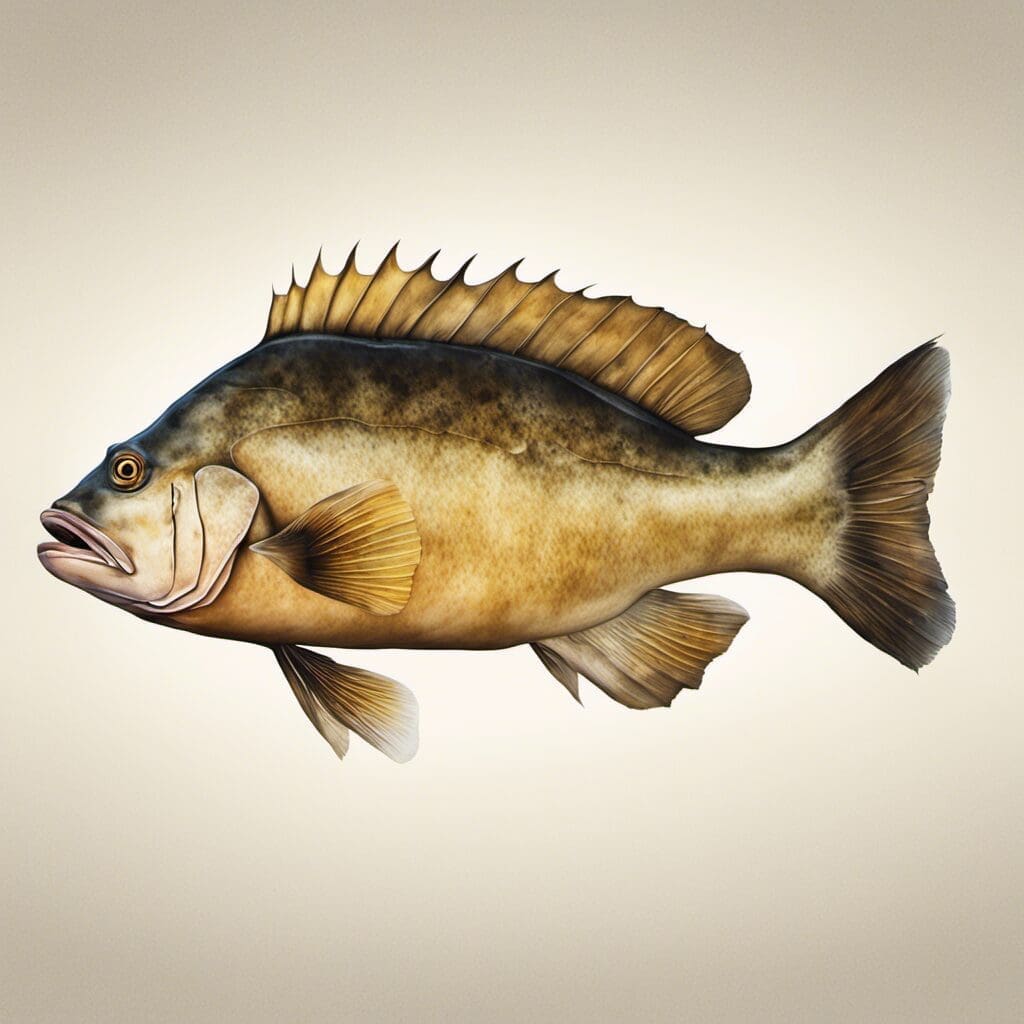Introduction
The Yellowfin Grouper, scientifically known as Mycteroperca venenosa, is a fascinating species of fish from the family Serranidae, most commonly known as the groupers.
Conservation Status
| Current Status | Conservation Efforts |
|---|---|
| Least Concern | Fishing regulations and restrictions |
Statistics
| Length (Average, Range) | Weight (Average, Range) | Average Lifespan | Other Stats |
|---|---|---|---|
| 85 cm (40-100 cm) | 30 lbs (15-45 lbs) | 15 years | Commonly solitary and territorial |
Distribution
- Regions/Countries: Typically found in the western Atlantic Ocean, from Bermuda and Massachusetts to Brazil, in the Caribbean Sea and Gulf of Mexico.
- Migration Patterns: Yellowfin groupers are not migratory fish and tend to remain in or near their home territories.
Habitats
- Water Type: Marine
- Depth Range: Often found at depths between 10-100 meters.
- Temperature Range: Prefers warmer subtropical waters.
When and Where to See
- Seasonal Patterns: Active all year round.
- Time of day: Daytime, as they are diurnal creatures.
Best Fishing Locations
The top fishing locations for Yellowfin Grouper are found in the Caribbean and around Florida:
- Haulover Canal, Florida
- Key West, Florida
- The Bahamas
- The Virgin Islands
- Off the coast of Bermuda
- Off the coast of Yucatan, Mexico
- Off the coast of Dominican Republic
- Off the coast of Cayman Island
Please note that the species is territorial and stays in or near its home reef, so finding them sometimes require patience and persistence.
How to Catch
- Preferred Bait or Lures: Cut bait such as squid and small fish are effective at attracting Yellowfin Grouper.
- Fishing Techniques: Bottom fishing is recommended due to the grouper’s habit of dwelling near the ocean floor.
- Best Time of Day or Season for Fishing: Late afternoon is optimum, and they are present all year round.
Identification Guide
Yellowfin Groupers have a robust body and large mouths. They can be identified by their dark brown or charcoal-grey body and yellowish coloration on the pectoral fins and the edges of their dorsal and tail fins.
Compared to Black Grouper, another species in the same family, Yellowfin Groupers have more elongated bodies and smaller mouths.
Culinary
- How to Cook: The flesh of the Yellowfin Grouper is firm and lean, making it suitable for grilling or frying.
- Taste Profile: Yellowfin Grouper has a mild, sweet flavor with a pleasant texture.
- Nutritional Information: This fish is high in protein and essential vitamins, and low in fat.
Any recipe suitable for white fish such as grouper tacos or grilled grouper with lemon and herbs is perfect for Yellowfin Grouper.
Additional Information
- Behavior: Yellowfin Groupers tend to stay within a defined territory, which is typically a coral reef or rocky bottom. They are predatory, feeding on smaller fish and invertebrates.
- Predators and Threats: Natural predators include larger fish and marine mammals. Human-induced threats include overfishing, habitat destruction and marine pollution.
- Cultural/Historical Significance: Yellowfin Groupers have been featured in many traditional fishing tales in the Caribbean.
References & Further Reading
- Florida Museum of Natural History – Yellowfin Grouper
- Fishbase – Yellowfin Grouper
- Seafood Source - Yellowfin Grouper

